A Waterloo resident – now credited with finding crucial flaws in Enbridge’s Line 9 reversal pipeline in Southwest Ontario -- is sounding the alarm over an internal e-mail from the National Energy Board that appears to boast about new Harper government rules that reduce the public’s ability to ask questions at pipeline hearings.
Louisette Lanteigne uncovered the e-mail via an Access to Information request. In the report attached to the memo, the NEB’s Hearing Manager for Oil Pipeline Applications told colleagues about the “successes” of a recently concluded Line 9A pipeline hearing in the summer of 2012.
The manager states that the public’s inability to cross-examine witnesses at the hearing was one of several achievements.
“Having only final oral argument and no cross examination worked well in this case,” wrote the NEB manager, “due to the highly technical issues regarding engineering and integrity."
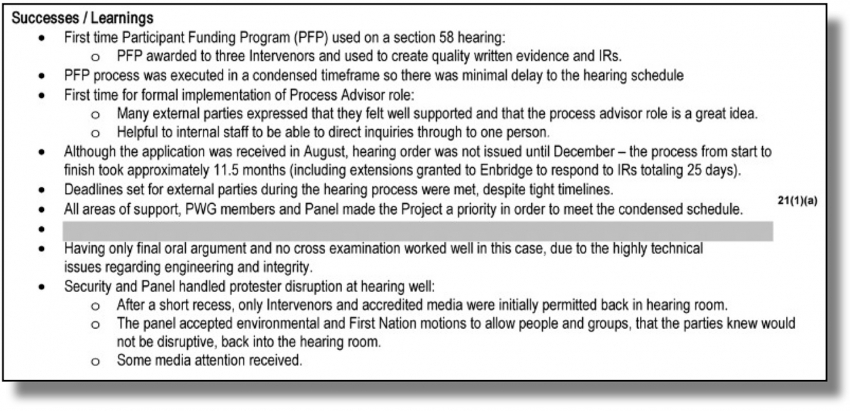
The e-mail was written three weeks after a Harper government omnibus bill C-38 law -- the "Jobs, Growth and Long-term Prosperity Act" -- came into force in 2012 that put new limits on NEB hearings. Conservative Minister Joe Oliver said at the time that the reforms were necessary to halt “environmental and other radical groups” from hijacking pipeline reviews.
Lanteigne, who discovered the NEB e-mail by accident, found the NEB manager’s comment hard to stomach.
“I was shocked when I read that,” she said Monday from Waterloo, ON. “The lack of public input is actually a liability.”
“You need cross examination. You need it to understand the logic of why the decisions are being made.”
“They undermine the intelligence of the public. Because they assume we don’t understand basic engineering,” she said.
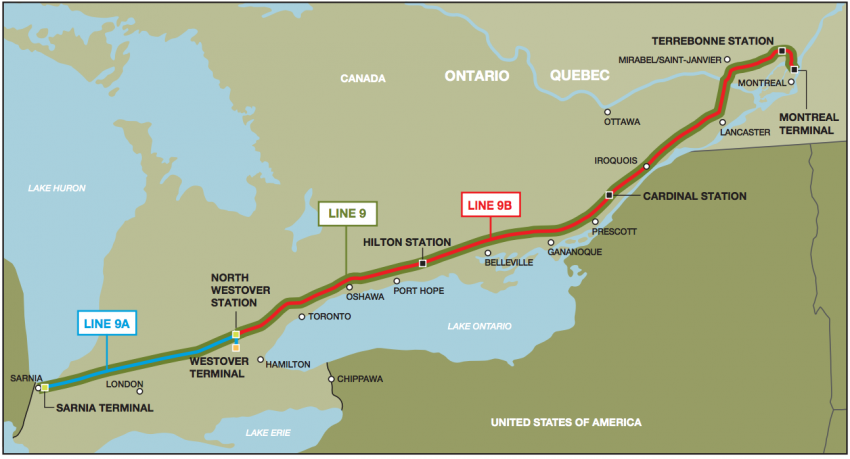
A National Energy Board explains its hearing manager’s email about cross-examinations this way:
“Because of the highly technical issues in this project, we held an oral final argument. Information placed on the record was tested through written information requests, which are available on the public record,” wrote a spokesperson last week.
The NEB hearing manager also listed these “successes” in the 2012 e-mail:
- Maintaining the hearing’s duration to 11.5 months
- Handling protester disruption at the two-day oral hearing by clearing the room with security
- Keeping deadlines for public participation “despite tight timelines”
Many observers were critical of the board for not doing a better job promoting the opportunity for the public to participate in the hearing. Some, including local politicians opposed to the pipeline who wanted to be interveners, missed deadlines to apply because they were not informed, according to Lanteigne.
The NEB finally approved the full length of the $16.9-billion Sarnia-to-Montreal pipeline in March 2014. (The budget is double the cost of Northern Gateway.)
Line 9 will pump 300,000 barrels of oil through its U.S. pipelines into southwest Ontario and onward to Montreal refineries. The move is part of a larger industry push, like TransCanada’s Energy East project, to pump Alberta and U.S. Bakken oil eastward.

Line 9's flow of oil halted
Trouble is, the oil is not flowing on Line 9 yet – and that is likely due to Lanteigne’s research into flaws in the pipeline’s design.
Though Lanteigne is not trained in engineering or law – (she waitresses in cafes for a living) – the citizen investigator has been doggedly researching Enbridge’s Line 9 pipeline for years.
She discovered a “common sense” problem with the project – the lack of the shut-off valves on both sides of waterways, like the Grand River near where she lives. She applied to speak at the NEB’s oral hearings into the project in London in 2012. She was one of just 18 interveners.
A much larger number of parties -- 44,000 -- were limited to writing letters of comment. “Many were form letters,” said the NEB e-mail.
“So I told them, beside major tributaries and flood risk areas, you need two valves to stop the oil from flowing, if the [pipeline] breaks,” said Lanteigne.
“And the board agreed with me. And that’s why Line 9 isn’t flowing.”
She used MapQuest to report that the driving distance between the valves was 45 minutes. Using “simple math,” she calculated that Enbridge would have a hard time containing a catastrophic oil spill into the waterway.
A standard spill leak, she told the board, of two percent of the pipe’s volume would release more than 1,000 barrels of oil into the water each hour.
NEB orders Line 9's design flaws fixed
Without much fanfare last month, the NEB denied Enbridge’s request to begin flowing oil on Line 9, citing the exact same shut-off valve concerns.
“The day that I received the National Energy Board ruling – I threw up,” laughed Lanteigne.
“I was laughing at the same time because I thought it was so preposterous that it took a housewife to raise that concern to stop the pipe.”
Enbridge’s CEO Al Monaco acknowledged the oversight.
"Since we received the NEB's directive, we've taken a hard look at what we had done technically and how we addressed the condition with the NEB," he said last month, according to the Edmonton Journal.
"It's clear from our second look that we should have done a much better job of explaining our approach to the placement of valves on the route and the NEB I think was right to question us on it."
The NEB would not acknowledge that Lanteigne was one who raised this issue (even though it’s in the transcript), but an enviro-watchdog group that attended the hearing did.
“Ms. Lanteigne was definitely critical in pushing to have the shut-off valves installed,” said Adam Scott, Climate & Energy Program Manager with Environmental Defence in Toronto.
“It is heartening to see just how much impact citizens can have when they get engaged in critically important issues like this,” he added.
Lanteigne is grateful the NEB dealt with her concerns.
“I raised the concern, they acted on it. But I always wondered in my mind what would’ve happened were I not allowed to say it?”
“I’m concerned how many pipelines are built like this still today.”
The Board did make $200,000 available to assist landowners, Aboriginal groups, incorporated non-industry, not-for-profit organizations, and other interested persons to participate in the regulatory process of the pipeline.
The full NEB e-mail and report disclosed to Lanteigne is shown below. The NEB managers were blackened out by the Vancouver Observer at the request of the board. The journalistic questions did not hinge on outing the manager's names, so they were removed as a courtesy. The grey sections were redacted by federal Access to Information staff.
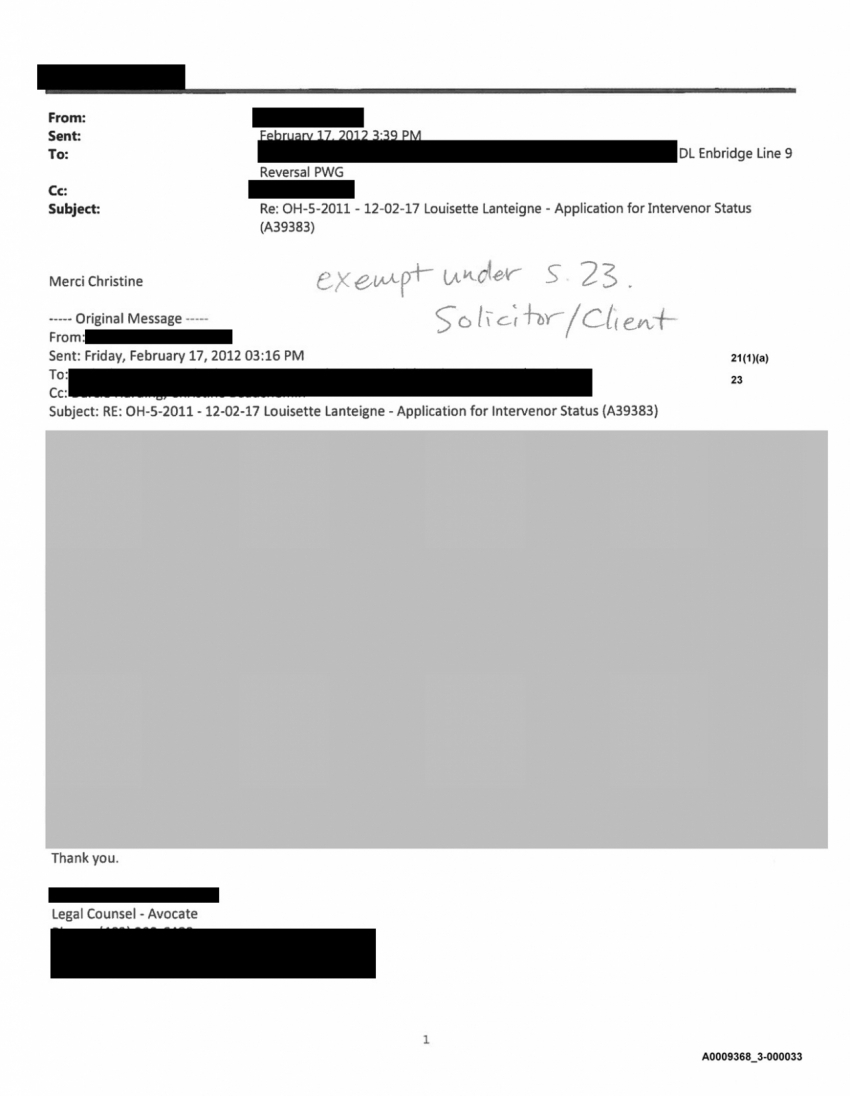
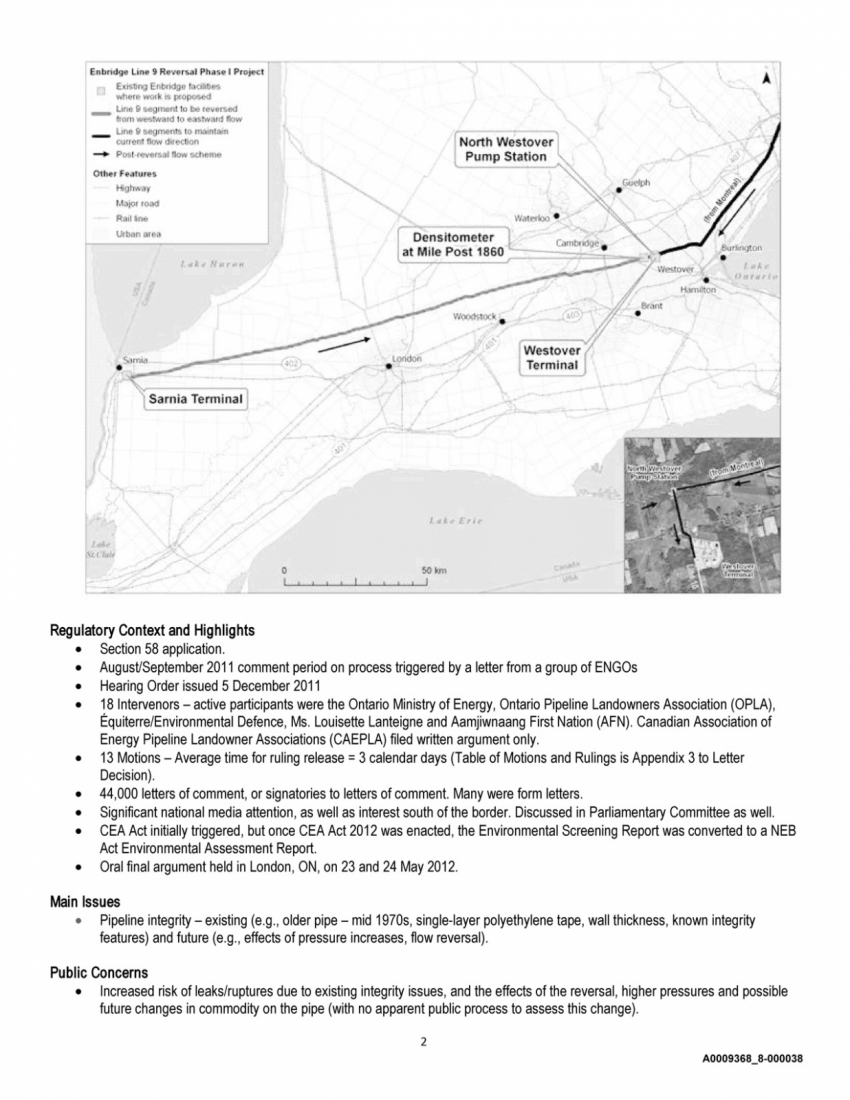
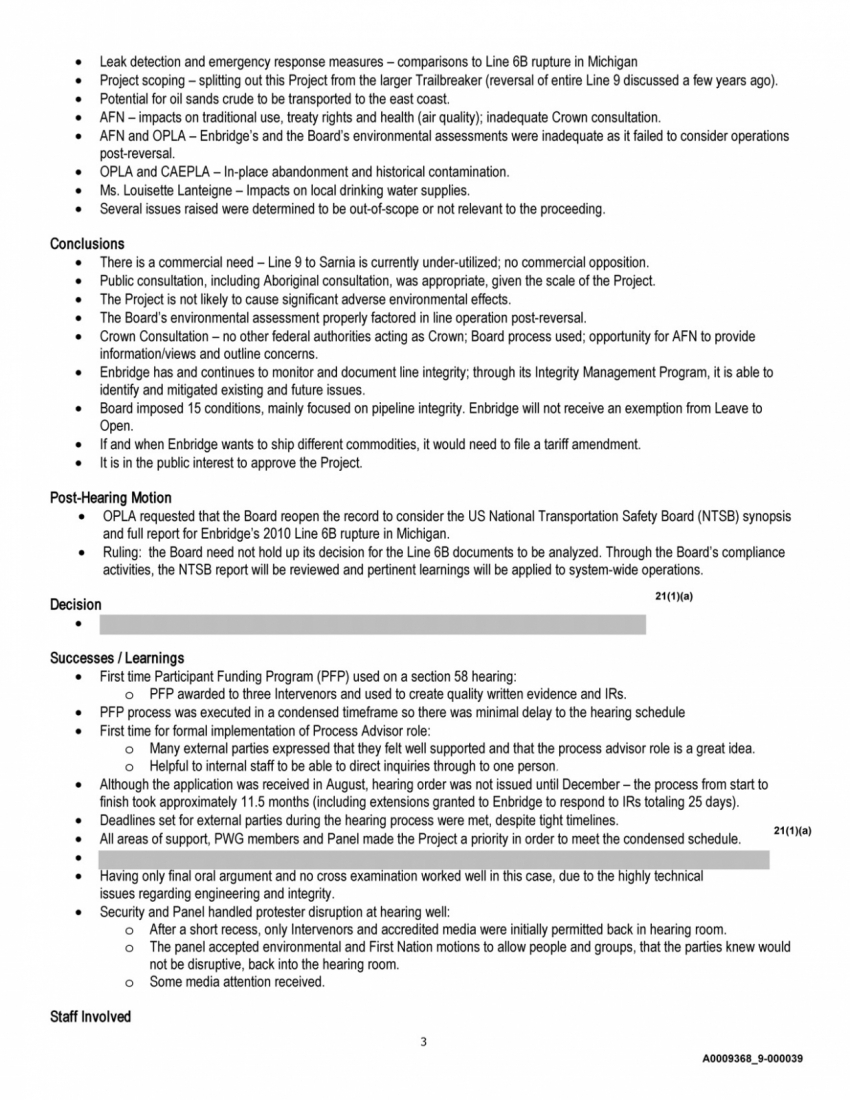

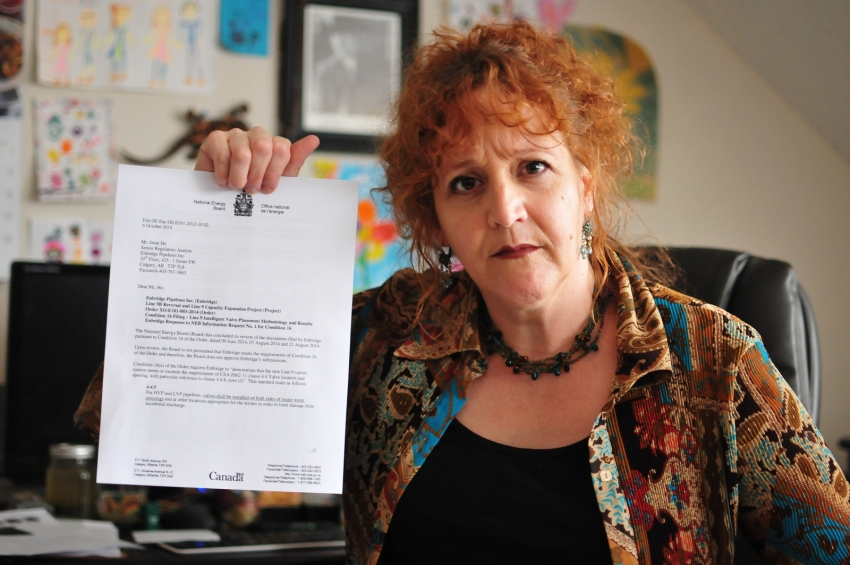

Comments